Write Us
We are just a call away
[ LET’S TALK AI ]
X
Discover AI-
Powered Solutions
Get ready to explore cutting-edge AI technologies that can transform your workflow!

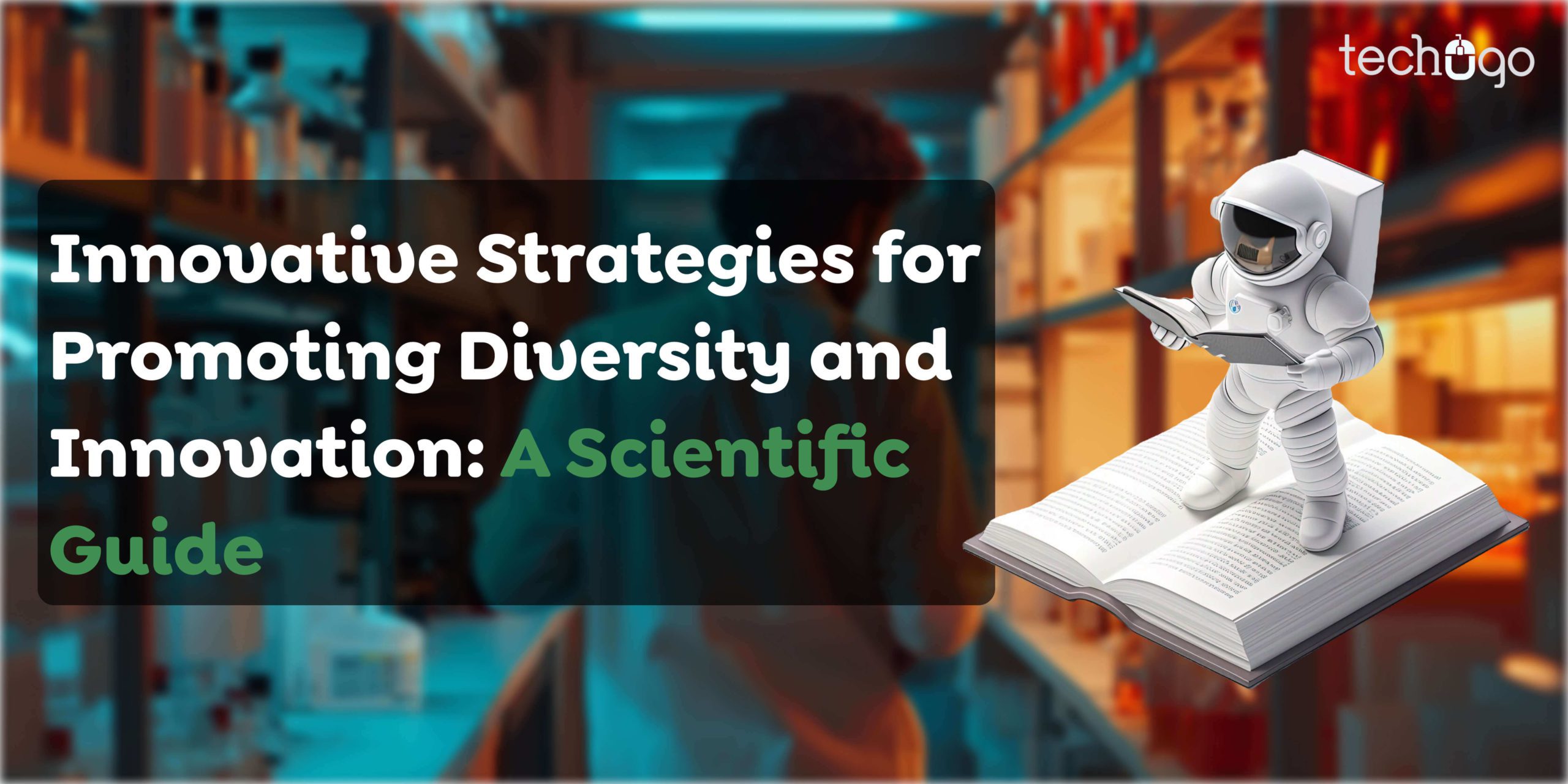
Inclusion and diversity are not the only buzzwords. They are essential components for achieving organizational quality. However, traditional ways of increasing diversity and innovation in the workplace, like quotas or education programs, are no longer effective in creating authentically inclusive and lively working environments.
Diversity and Inclusion (D&I) are multifaceted notions that go far beyond the representation of people in demographics. They encompass a wide-ranging appreciation of different views, backgrounds, perspectives, and ideas that enhance the decision-making process of organizations and their own.
With the advent of technology, an inclusive and diverse work environment is essential for all businesses across all continents.
Multi-cultural teams that have a variety of experiences, cultures, and viewpoints provide the chance for creativity and problem-solving that is creative globally. Furthermore, having an employee who is reflective of the variety of the world market provides a better comprehension of customers’ needs. It enhances the ability of an organization to adjust to changes. This blog focuses on programs to promote diversity and inclusion and the use of new, scientific-based strategies for sustainable innovation.
Diversity and inclusion are important strategic advantages that can lead to company creativity and innovation, improved decisions, and more enduring working environments. The importance of diversity and inclusion has been increasingly recognized by society and the business world. Businesses that embrace inclusion and diversity have huge benefits through improved decision-making, innovation, and overall performance. Diversity and inclusion’s positive effects extend far beyond social accountability; it’s an imperative strategic requirement that fuels the company’s success and helps ensure longer-term viability.
Diversity can spark creativity by challenging conventional thinking, stimulating new perspectives, and encouraging creative problem-solving. Research shows that diverse groups from different backgrounds, genders, experiences, and perspectives always produce better ideas than homogeneous groups. Diversity can unlock the potential for new products, services, and strategies.
Businesses that prioritize inclusion and diversity consistently outperform those of other companies. Returns on investments (ROI) are closely linked to diverse executive boards. However, it’s crucial to remember that diversity and inclusion must be based on improving workplaces and employee satisfaction, not on a fiscally driven method.
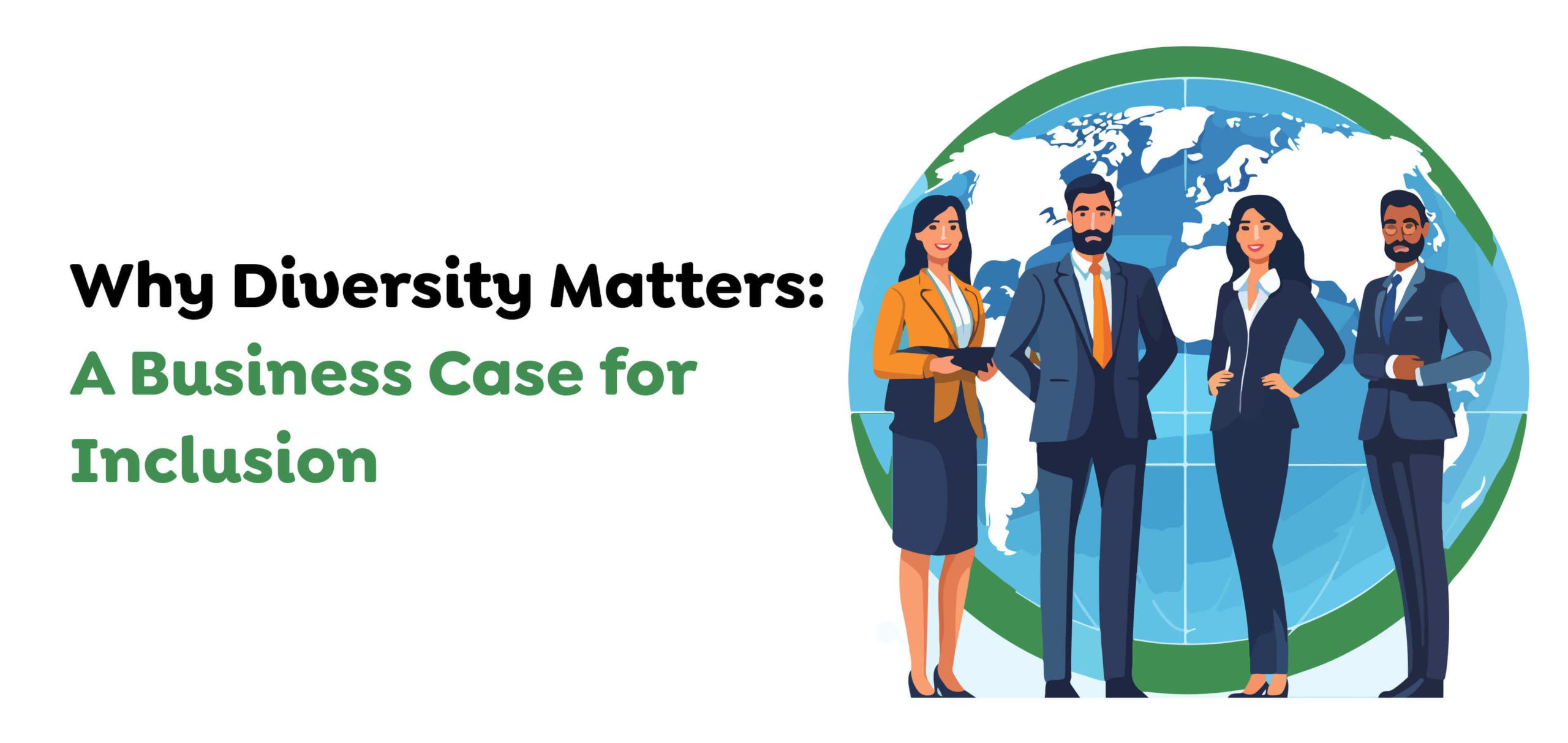
Increased market share and loyalty are easy for companies committed to diversity, as they can comprehend and communicate with an affluent client base. Diverseness can also provide companies with a competitive edge by attracting and keeping top employees.
A welcoming culture creates feelings of belonging, trust and security, boosting employee satisfaction and efficiency. The reason is that workers are much more likely to appreciate their distinct achievements when they are praised and acknowledged. The kind of work environment that promotes cooperation and creativity since people with different backgrounds have diverse abilities, perspectives, and experience.
Expanding your recruitment searches to encompass candidates of diverse backgrounds, ethnicities, and ages increases your talent pool and increases the odds that you will find the ideal hires. Diversity can improve the performance of your enterprise and 67% of people look at diversity when looking for jobs. Hiring more diverse workers is essential to attract the most qualified, interested applicants.
Mobile app development company in USA prioritizing the inclusion of diversity are recognized as the preferred employers by high-quality talent. Today’s society is increasingly socially aware. Motivated and loyal employees will be admired for their distinctive achievements if they’re determined and committed to creating a corporate culture and increasing the diversity of their workforce. Positive perceptions of diversity attract people with diverse backgrounds and build relationships with clients, partners and the local community.
There’s a clear connection between innovation and diversity. When measured by revenue mix, the companies with the highest diversity (in terms of the nature of their workforce, industries, pathway educational level, gender, and age) are equally innovative. Teams with diverse backgrounds can more effectively identify services and products that fulfill the demands of the new customer profile.
Making an inclusive and diverse culture can be challenging. It is a constant process that demands commitment, accountability, and evaluation. In this section, we’ll discuss ways to ensure that your diversification and inclusion efforts will be sustainable and effective long-term.
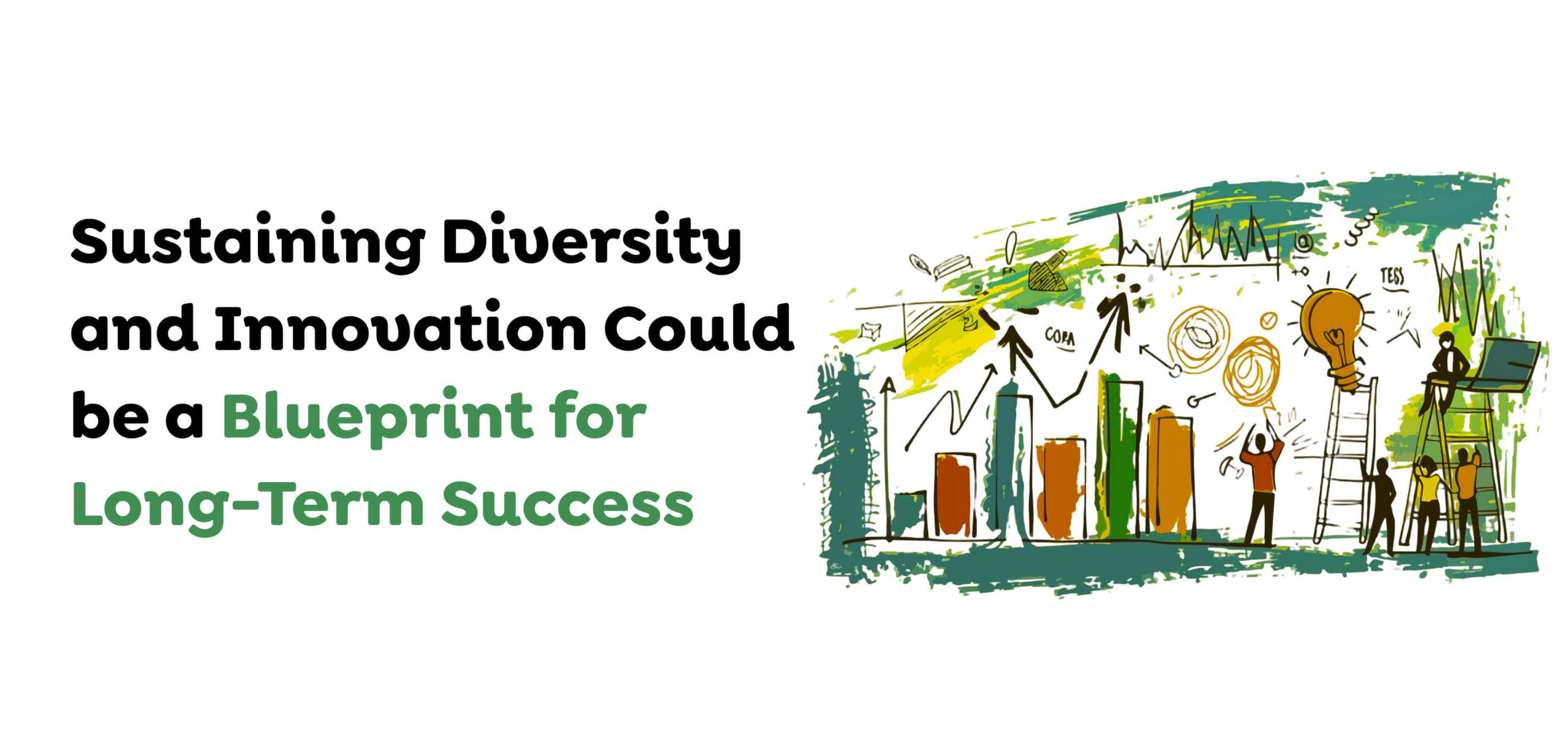
The first step in ensuring your diversity and inclusion programs can last long is identifying the goals and measures. What do you want to achieve through your programs? How do you gauge the progress you have made and your success? What will you do to communicate your achievements and concerns with your partners? With clear and specific objectives and goals that ensure that all your actions fully align with your objectives, monitor the impact of your actions, and modify your strategy as required.
Ensure that your initiatives for diversity and inclusion can last for a long time by involving your employees and leaders. Inclusion and diversity aren’t exclusively the job of HR or a committed team but also of all within the company.
Your organization must involve its staff and leaders in creating, implementing and assessing your efforts and provide your employees with the tools in training, support, and guidance you need to encourage inclusiveness and diversity. Engaging your leaders and employees will build a sense that they are in control of accountability and collaboration throughout the company.
Make sure that your diversity and inclusion strategies are integrated within your existing procedures. Inclusion and diversity aren’t standalone events or programs but important aspects of the business’s operations and culture. The key is to integrate the concept of tenant acquisition, development, and retention, which is vital for company success.
Observe and analyze strategies to ensure that your efforts last. Inclusion and diversity aren’t fixed but constantly evolving concepts that require continuous evaluation and improvement. You must collect and analyze data about your diversity and inclusion indicators and employees’ and clients’ views, experiences, and satisfaction. It is also important to seek and act on input and suggestions made by your customers and employees, as well as be proud of and celebrate your accomplishments and lessons. When you monitor and evaluate your actions, you’ll be able to determine your organization’s strengths and weaknesses and improve your results.
Ensure that your diversity and inclusion programs can last long. Inclusion and diversity aren’t separate but are connected and affected by the outside environment and the changes. It is essential to stay current with the most recent studies, research, and advancements in diversity and inclusion. You should also compare your results against colleagues and your competitors. Connecting and working with other organizations, experts, and communities who share your goals and beliefs and benefit from their achievements and challenges is also important. By learning from successful methods and benchmarks, you remain relevant, competitive, and innovative.
Inclusion and diversity aren’t fixable, but they can be agile technology and change with changing demands and requirements. It is essential to regularly review your metrics and goals, the strategies you employ, your actions, and your performance and impact, then make changes as needed. It is also important to inform and discuss your stakeholder’s concerns and include them in the revision and review procedure. By reviewing and revising your strategies, you’ll be able to make sure they align with your goals, vision, and core values. They also need to be adaptable to needs and opportunities.
Companies that implement durable D&I strategies can achieve significant benefits, like an increase of 20% in inclusion within the organization and a 6.2% increase in work efforts. They also have a 5% higher likelihood of employees staying in the company and an almost 3% increase in employee productivity. For an environment that is sustainable for D&I, the following three actions are recommended for organizations to take.
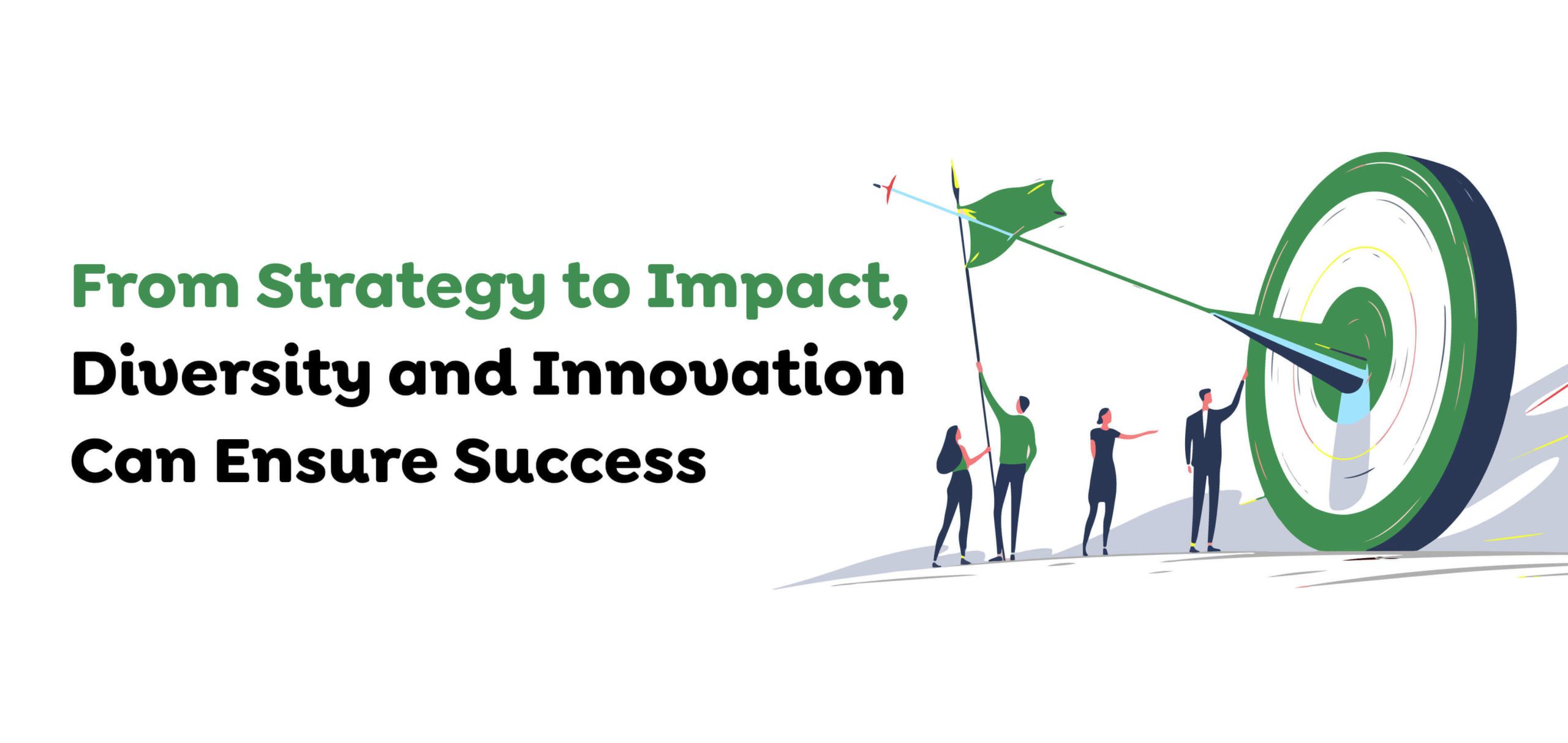
Modern organizations adopt an employee-centric approach to achieving D&I results, focusing on the aspects relevant to their specific employee base and increasing employee participation. To achieve this, D&I strategies must be implemented and managed by the entire organization.
Find the issues facing employees and the organization for HR and D&I executives to create an appropriate D&I strategy. Communicate with clear messages that encourage an overall commitment to D&I goals. Inform employees about how they can be directly involved in helping attain its D&I objectives.
While employers can implement various D&I initiatives, they do not always ensure equal inclusion throughout the workforce. Over 85% of D&I executives cited the importance of inclusion within their organizations as the top results for talent from their D&I initiatives. However, only 57% of companies currently employ that measure to monitor D&I performance, and a lot do not have confidence in the accuracy of that measure.
Promote an environment of inclusion by evaluating their strategies based on main dimensions, which include fair treatment, decision-making, trust, and diversity. This information allows managers to adapt their approach to ensure they’re developing and implementing strategies effectively.
Incorporate initiatives within the existing process to ensure lasting and steady D&I results. It is estimated that 65% of diversity and inclusion managers use people primarily to advocate for D&I initiatives, but some believe that using processes can be more efficient in reaching D&I objectives. The processes for managing people, including recruitment, succession planning, and performance management, are most susceptible to bias and are the initial step to integrating D&I.
However, the most successful companies have shifted away from integrating D&I within the HR department and are looking at other operations and processes, such as finance, operations, and accounting, to find possibilities. Ultimately, long-lasting, sustainable methods are the only way for companies to achieve significant progress in D&I, which is essential to building an inclusive workforce to innovate, collaborate, and expand business.
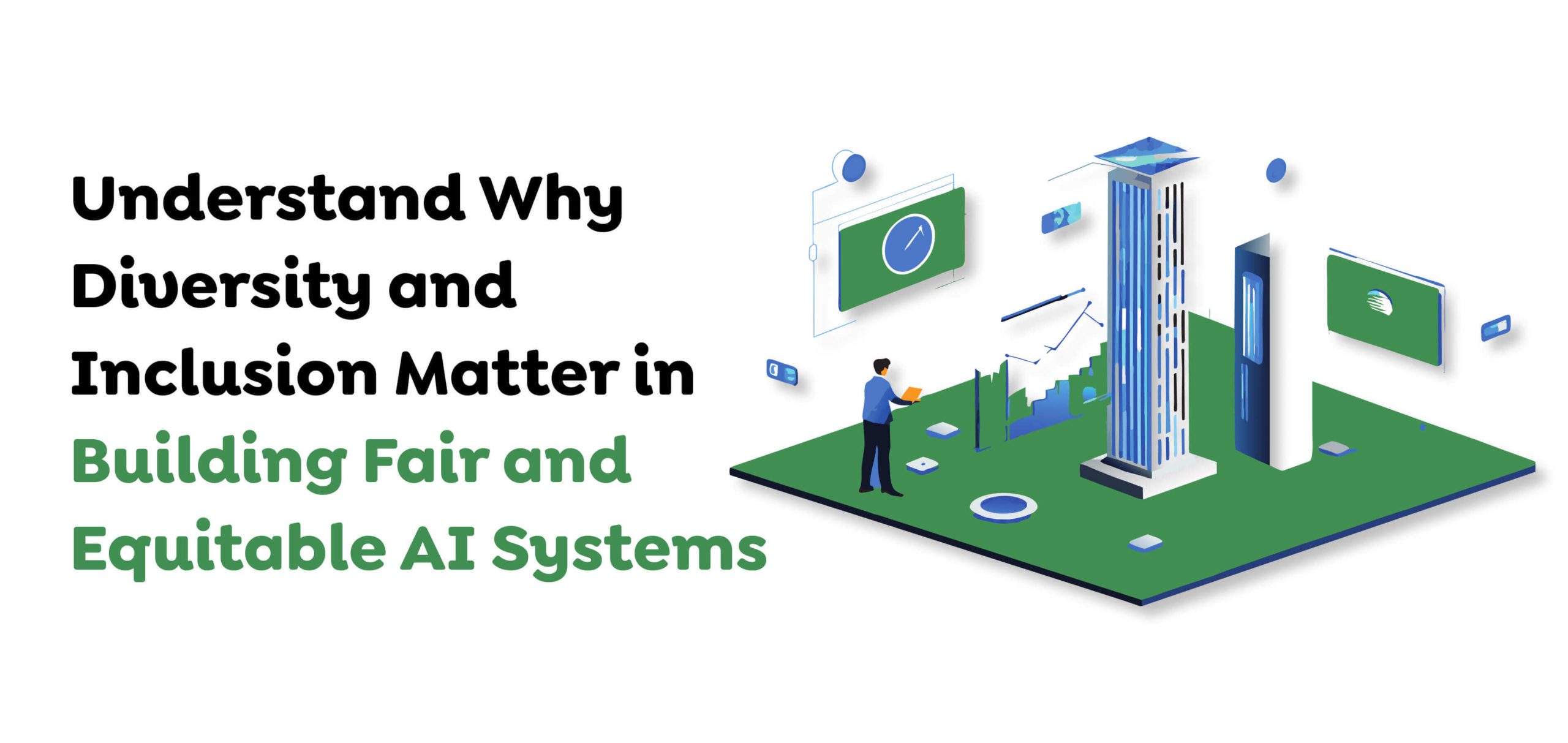
AI has emerged as an important catalyst for the next wave of technological advancement. The speed of development in AI is expanding and affecting how we live like never before. Everything that was once thought out of reach can be seen daily, from autonomous cars to robots taking over jobs. However, when innovative technology is developed, it has effects. A major issue involving AI is the issue of inclusivity and diversity within the technology that affects millions of people across all backgrounds.
Also Read – How does an AI App add Great Potential to your Business?
How do diversification and inclusion contribute to AI? AI platforms are built around the ability to learn from data. However, when the data are biased toward the person who created it, it may cause major harm. In addition, AI technology is all around us in areas you may not be conscious of. For example, surveillance cameras worldwide are equipped with advanced AI technology that analyzes every second of movement by people.
If there are any implicit biases in the algorithm, it may cause unfairness to certain citizens. It is important to have diversity as we need to be certain that, when an artificial intelligence system is making a decision it is in a position to make correct decisions.
The principal reason behind creating an equitable system to make crucial decisions will be lost if we allow personal preferences to determine the system’s design. Large companies such as Google, Facebook, and Microsoft have implemented programs for diversity and inclusion, but do they actually sustain the diversity of their employees developing systems to support their millions of customers?
Because of the absence of researchers and engineers with diverse backgrounds and the lack of diversity in the AI products designed and implemented by billions of users could lead to the spreading of bias on a huge scale. Therefore, diversity and inclusion within AI is crucial. Disparity in the equality of principles is essential to create an impartial product. Because these technologies will build the foundations for futuristic technologies such as AI, it is essential to tackle the issue of fairness from the first feasible point.
The increasing importance that AI is playing in business processes as well as the manufacturing of goods and products and the products themselves, the absence of diversity within AI and the opacity of the people of color could result in the cause of a series of crises that will pile on top of each other if the biases aren’t addressed soon. Technology is transforming lifestyles and human behaviour that’s not our responsibility. AI can create self-driving vehicles, robots that talk to us, and many more. So, diversity in AI is vital to eliminate biases in AI technology. It is complex and polarizing, which is why inclusion and true ownership are required inclusion and true ownership are required.
Integrating D&I concepts in Environmental, Social, and Governance (ESG) strategies isn’t just the case of social accountability. It is an essential strategic requirement for companies seeking sustainable growth and long-term sustainability. Diverse and inclusive employees stimulate creativity, ingenuity, and problem-solving. This leads to improved decision-making as well as better results for business.
The results of studies have repeatedly shown that businesses or AI app development company with a diversifying workforce perform better than their peers with less diversity regarding profitability in terms of market share, performance, and customer satisfaction. Additionally, D&I initiatives contribute to an increased social license to run, increasing the reputation of a business and drawing more potential employees.
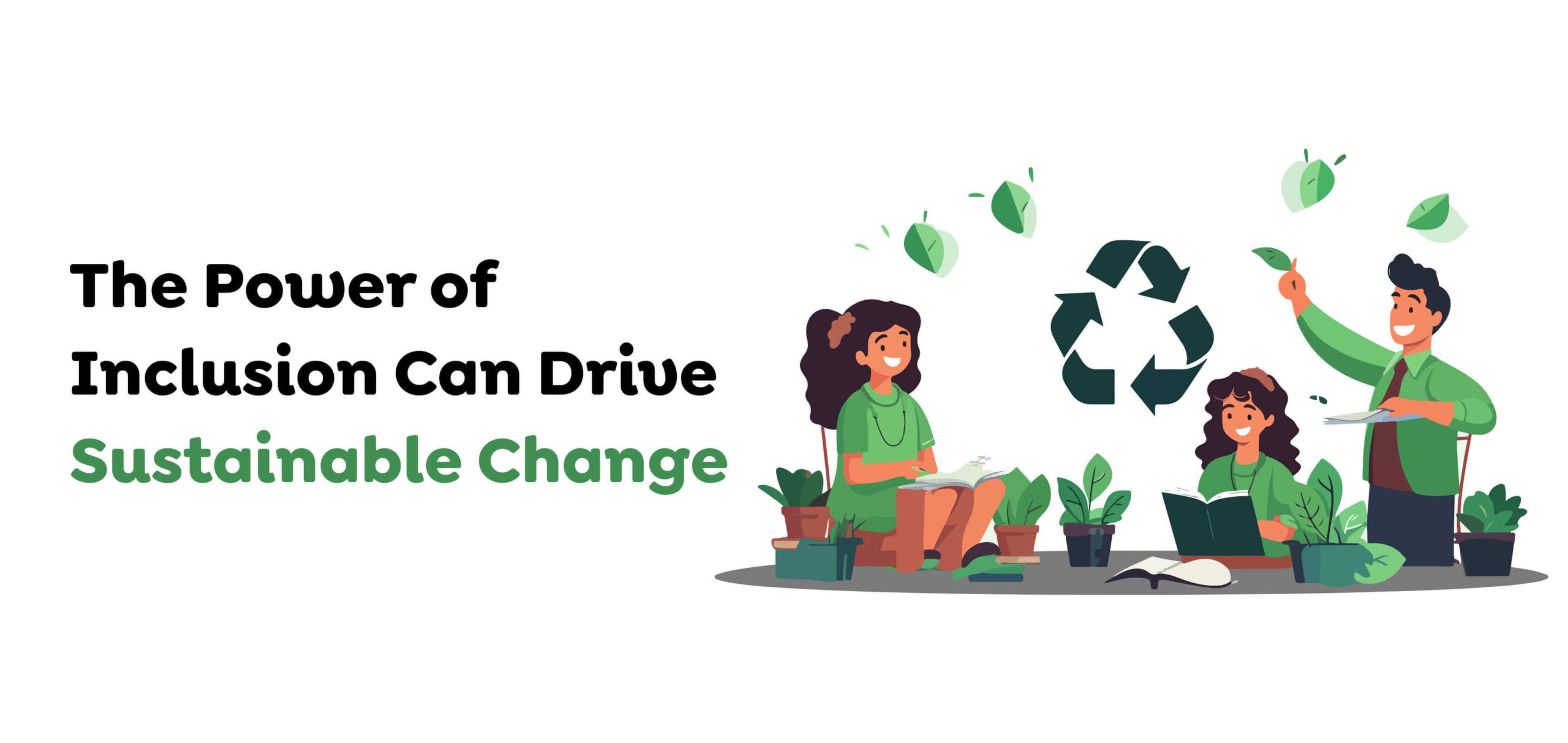
In an increasingly connected world today, investors and consumers demand more transparency and accountability of businesses about their environmental and social impacts. Firms that follow D&I’s values can show a real dedication to these principles by fostering trust and respect to all stakeholders. ESG strategies that encompass environmental sustainability, social responsibility and governance methods have a significant effect in the context of diversity and inclusion practices. The reasons why the inclusion of diversity is crucial for the field of ESG:
A culture of inclusion is a source of innovation and creativity. The diversity of perspectives challenges conventional thinking, allowing organizations to find new solutions to complicated ESG problems. If different perspectives are included in discussions about sustainability, social impacts, and governance, diverse perspectives are created, leading to stronger solutions that address an array of different societal requirements.
Genuine involvement with stakeholders is essential to successfully implementing an ESG strategy. By fostering a welcoming environment, companies can understand and respond to various stakeholder groups’ different demands and needs, such as community members, employees, customers, and investors. The inclusion of all stakeholders ensures that a broad range of opinions are considered and heard, creating stronger relationships with all people.
In a constantly changing world characterized by disruptive societal events and financial uncertainties, diversifying and inclusive teams have an advantage. Different perspectives and backgrounds allow organizations to better assess risks and develop flexible strategies to withstand unexpected obstacles. A diverse employee and board can better identify gaps, rapidly adapt, and improve the overall resilience and effectiveness of ESG initiatives.
Inclusion and diversity are essential elements of social accountability. An effort for D&I in ESG strategies can result in equal chances for every person, regardless of ethnicity or background. This inclusiveness extends to environmental justice, ensuring that sustainability initiatives’ advantages are equally distributed across the communities. Promoting fairness and equity for all companies can encourage sustainable development that benefits the entire society.
A strong governance system is the foundation of efficient ESG strategies. Different boards and leadership teams offer a range of viewpoints on decision-making, which reduces the possibility of groupthink and increases accountability. Inclusive governance practices promote moral leadership and ensure that organizations adhere to values that are in line with larger societal norms and demands.
Despite the evident positives, attaining genuine inclusiveness and diversity within ESG frameworks has obstacles. Barriers to inclusion are systemic, subconscious biases and deeply ingrained ways of doing things that impede progress. To overcome these barriers, we must take a holistic approach, which is more than mere tokenism and the simplest diversity programs.
The company must develop a strategy that promotes inclusivity across all levels. It is about promoting a sense of belonging. It also involves implementing fair methods of hiring and promotions and providing inclusive training, using data-driven strategies to monitor leaders’ progress and hold them accountable.
Making a more multicultural and inclusive workplace is much easier said than done. Here are some of the most difficult challenges companies face when making their diversity and inclusion strategies.
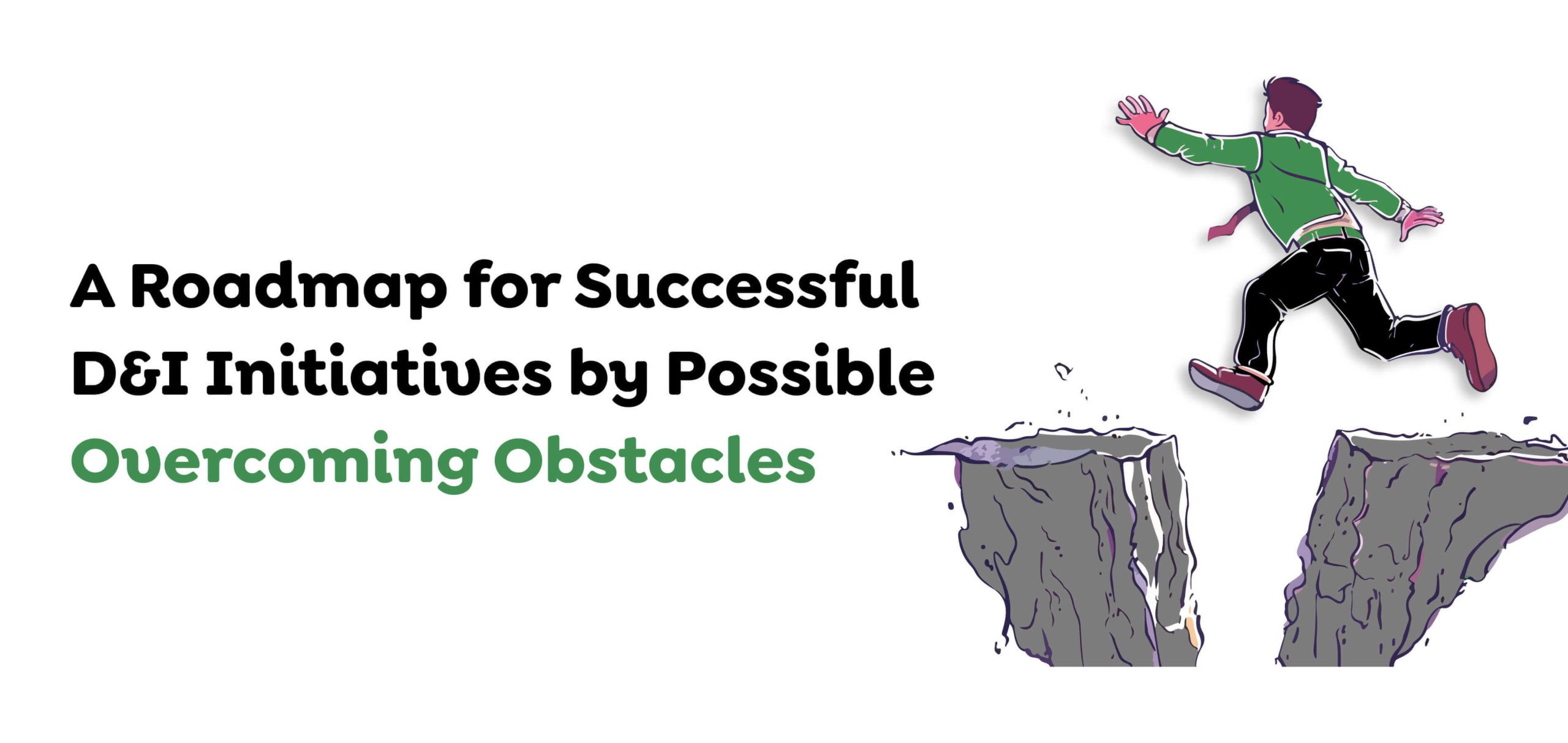
D&I initiatives should coincide with your company’s goals and principles. Change in the organization starts at the highest levels. Upper management must provide resources for D&I regardless of uncertainty.
After you’ve received the backing, you can ask important concerns about your business’s workforce. In most cases, these questions result in difficult but essential discussions to bring about real transformation. HR and individual department managers are accountable for creating changes and maintaining a D&I-focused environment. They should be trained to provide a consistent image that supports D&I methods while assessing the progress of the business towards D&I targets.
Managers need to be educated regarding D&I objectives, why they’re crucial, and what’s expected from them. Leaders must lead through example, from integrating D&I in their interview method to how they conduct themselves with employees. Each manager must create an inclusive workplace by recognizing biases, noting their employees’ opinions, and rewarding their efforts in their daily lives. Employees should also receive D&I instruction to avoid and defeat existing biases. The sessions should demonstrate how companies are aware of the existing biases and prejudices within the workplace and explain how the D&I strategies can be a chance for everyone to recognize and work to improve.
The only way to determine the extent to which D&I is improving within your company is to gauge and monitor it. The annual survey alone is not enough. It is essential to keep listening, and gather real-time insight on what your employees think and feel. Give employees the chance to express D&I questions because they can have a first-hand perception of conflicts they could be facing that management may not have. Utilize this information to develop new ideas to implement people-focused initiatives and develop a relationship of trust with your employees, resulting in better overall productivity.
It is important to evaluate the diversity and inclusion KPIs before and after implementing each new D&I project. Take note of the improvement (or the absence of changes) in your metrics. Diversity-related KPIs can be determined easily when you divide the workforce according to race, gender, or other factors.

Diversity and innovation can be huge benefits to any organization’s sustainability initiatives. They boost productivity and efficiency, aid in better decision-making, and simplify the implementation of operational and structural improvements that benefit people, the environment, and financial results. Companies that consider diversification and inclusion have excellent potential for reaching sustainability objectives. They are doing their part to create a sustainable environment where pollution and global footprints can be reduced. Making a difference by embracing diversity and inclusion could accelerate real changes and protect the environment for future generations.
Techugo, a renowned mobile app development company is an ideal partner for businesses seeking to integrate diversity and inclusion into their sustainability initiatives. With a proven track record of delivering innovative technology solutions, we can help organizations harness the power of diversity to drive efficiency, improve decision-making, and foster a more inclusive workplace culture. By leveraging AI and data analytics, we assist in identifying areas for improvement, measuring progress, and implementing sustainable practices that benefit both people and the planet. So get in touch with our experts today, to know more!
Write Us
sales@techugo.comOr fill this form